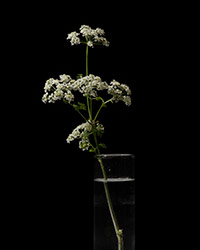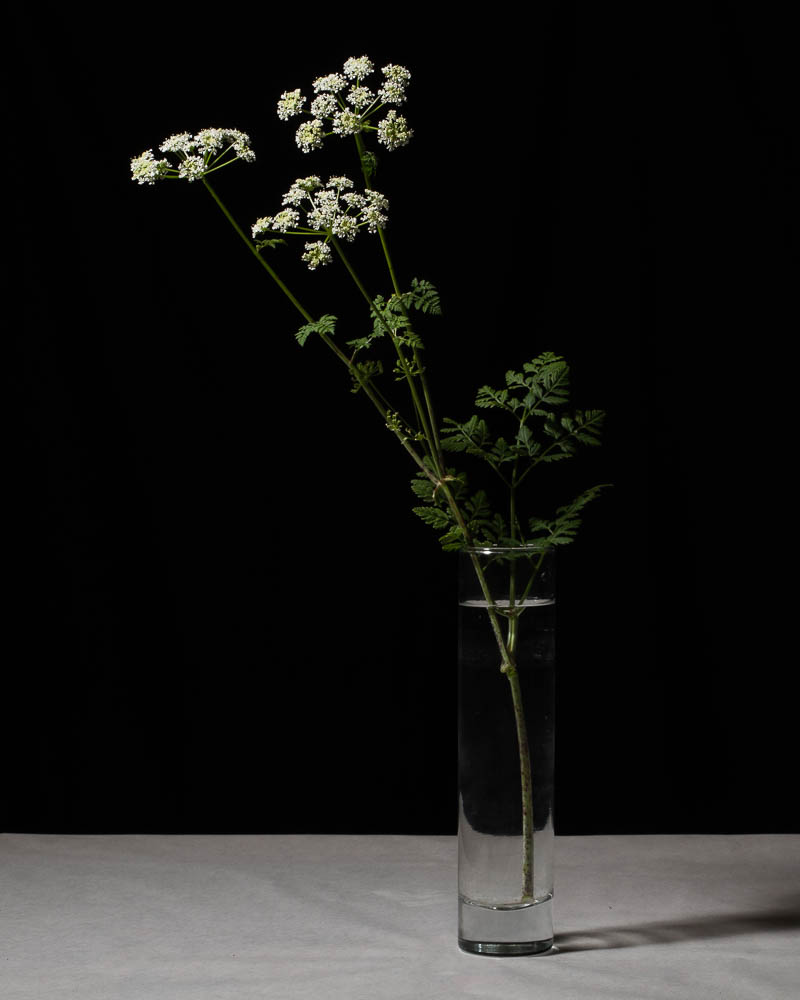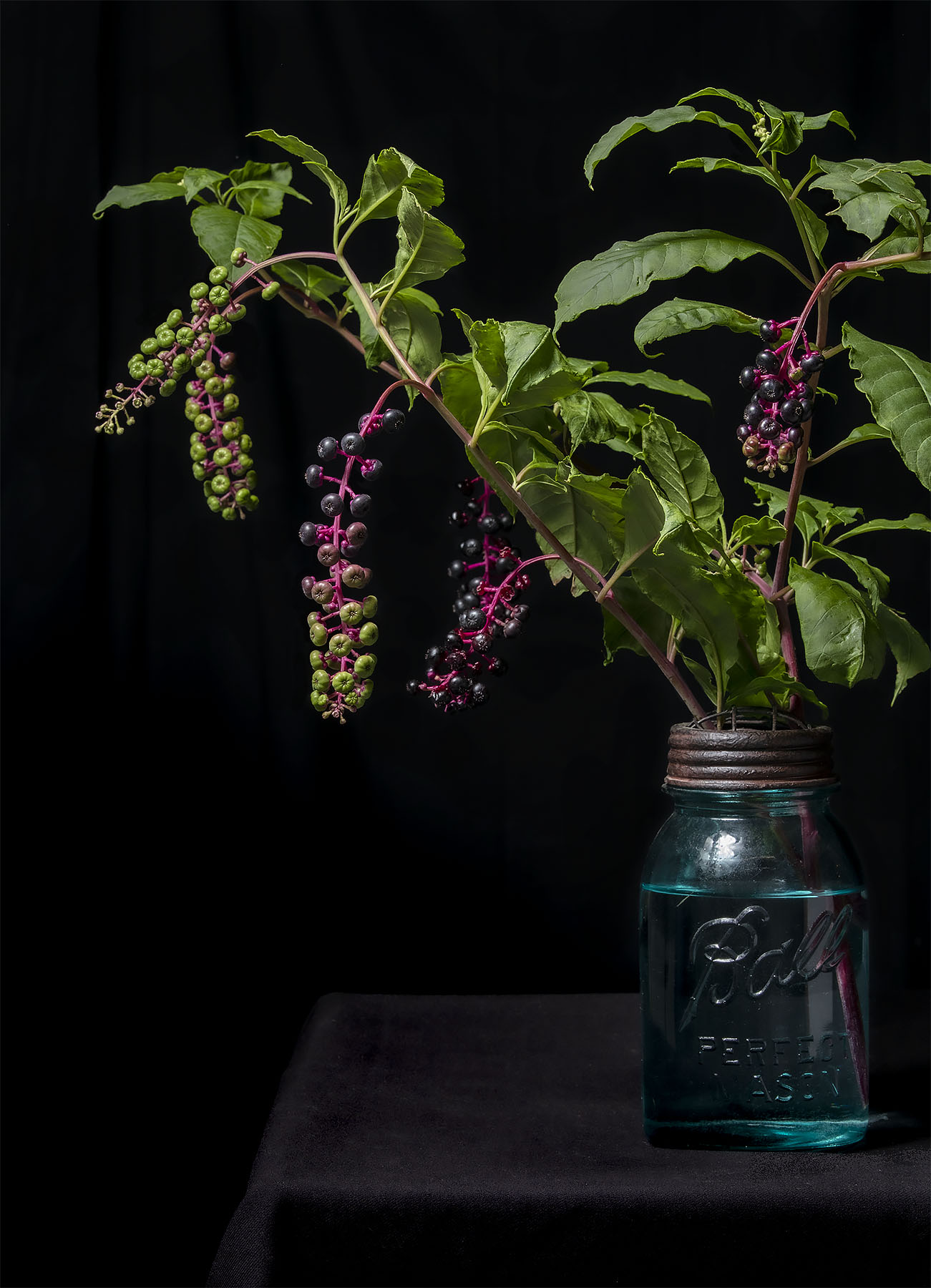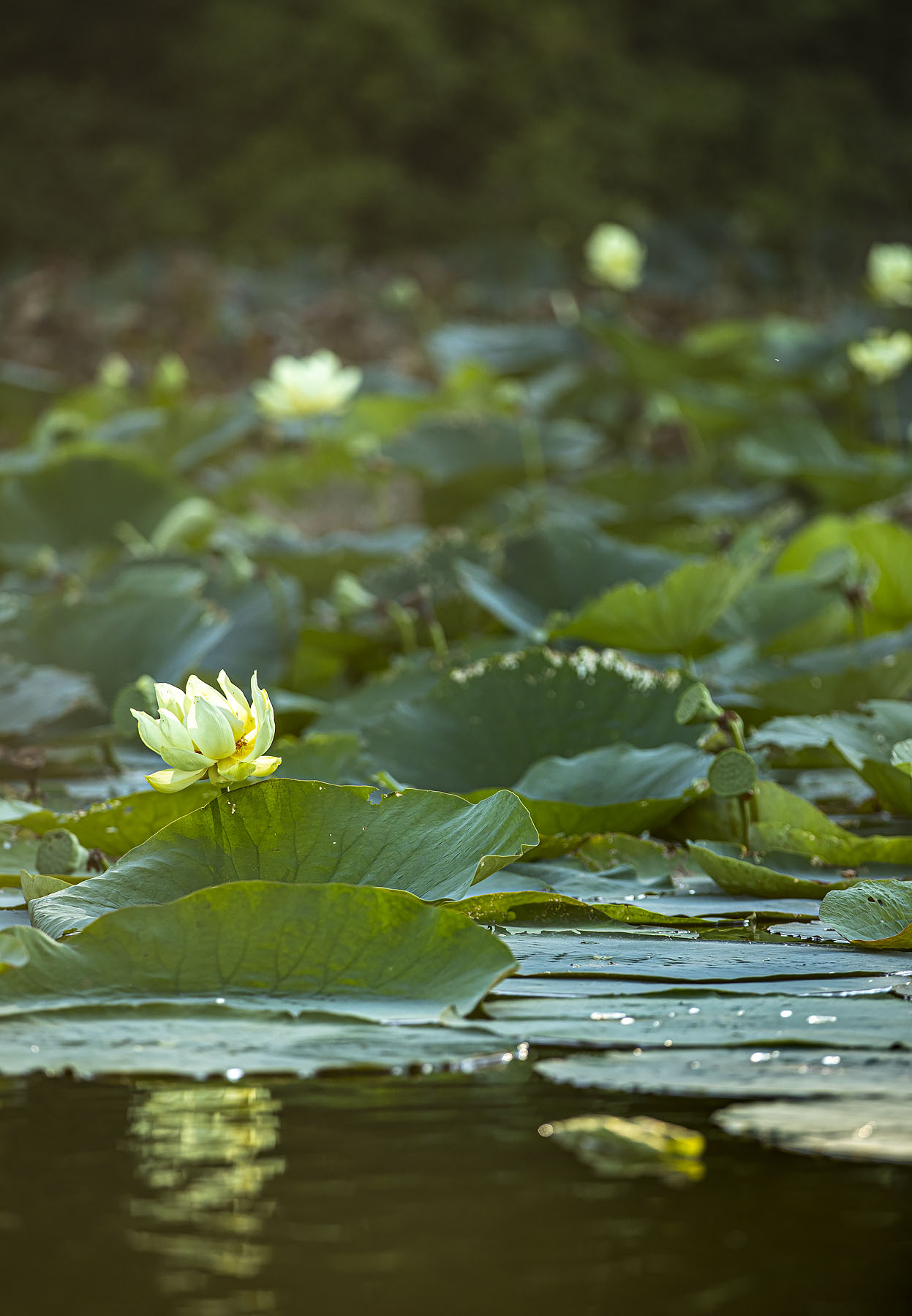Early in this photography project, before most of the plants had been identified, a concerned friend asked if one specimen could possibly be giant hogweed. I was pretty sure it wasn’t … almost sure … umm, not sure enough. So I googled up giant hogweed to make certain I knew what it looked like, so I could avoid accidental encounters, and holy cow! Google served up not only pics of the plant itself but also of the hideous blisters that hogweed can visit upon the unwary. It also helpfully observed that giant hogweed looks kind of like regular hogweed, wild carrot/Queen Anne’s lace, wild parsnip and a host of other plants, some of which will do horrible things to your skin and some of which are harmless.
So when I came across a mystery flower growing right in front of my house that bore more than a passing resemblance to giant hogweed, I approached it with extreme caution: long pants, long sleeves, gloves. Instead of putting the cuttings into my normal collection bucket, they went into a paper sack that could be burned, and my pruning shears got an immediate hot-water-and-soap scrub. And I took detailed photos of the components of the plant – the stems, the underside of leaves, all of it – hoping that would help with eventual identification.

And those pictures did help Shirley Miller, Master Gardener, identify it, but her answer wasn’t what I expected: the plant turned out to be poison hemlock, of Socratic fame. Topical contact with it might cause a skin rash but its main risk is much more dire: every part of the plant, from the roots to the leaves, is poisonous if consumed orally.
Like fatally poisonous. Just ask Socrates. Eeek.
The whole giant hogweed/poison hemlock episode made me reconsider the cavalier attitude I had had toward plant gathering. Until that point, I had been handling most plants with my bare hands and thought the biggest risk facing me was chigger bites. I guess there’s no harm in being a little more cautious … especially if it keeps me from turning into a giant sunburned blister, or following in the footsteps of a Greek philosopher in a way I’d rather not.
Poison Hemlock, Conium maculatum
Shoot date: August 3, 2019
Possible use as a cut flower: No idea. With this plant still unidentified at the time and with images of horrifying giant hogweed blisters fresh in my memory, I had no intention of keeping these cuttings in the house to see how they aged. They went straight into the burn barrel. And knowing the lethal potential of poison hemlock now, I’m especially glad I didn’t keep this plant around on my kitchen counter!




